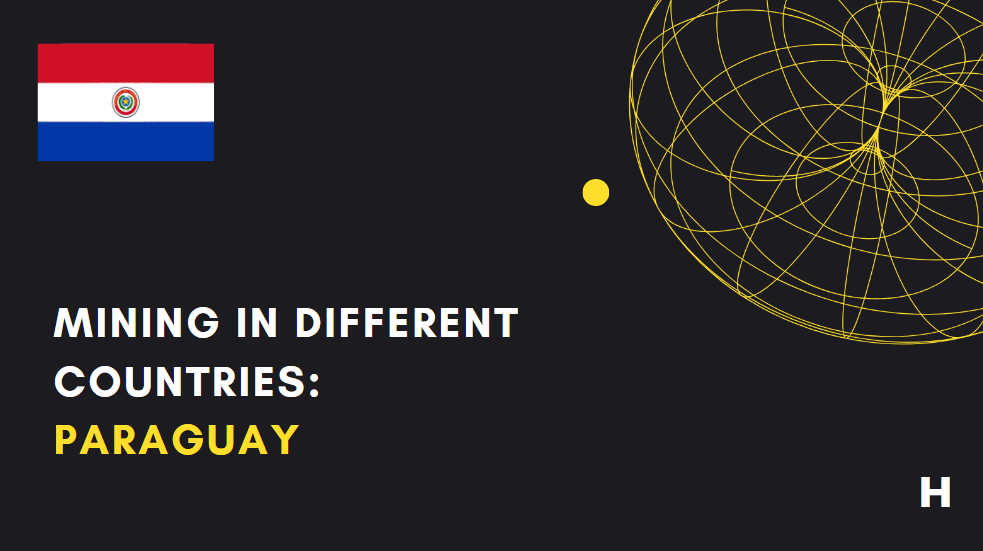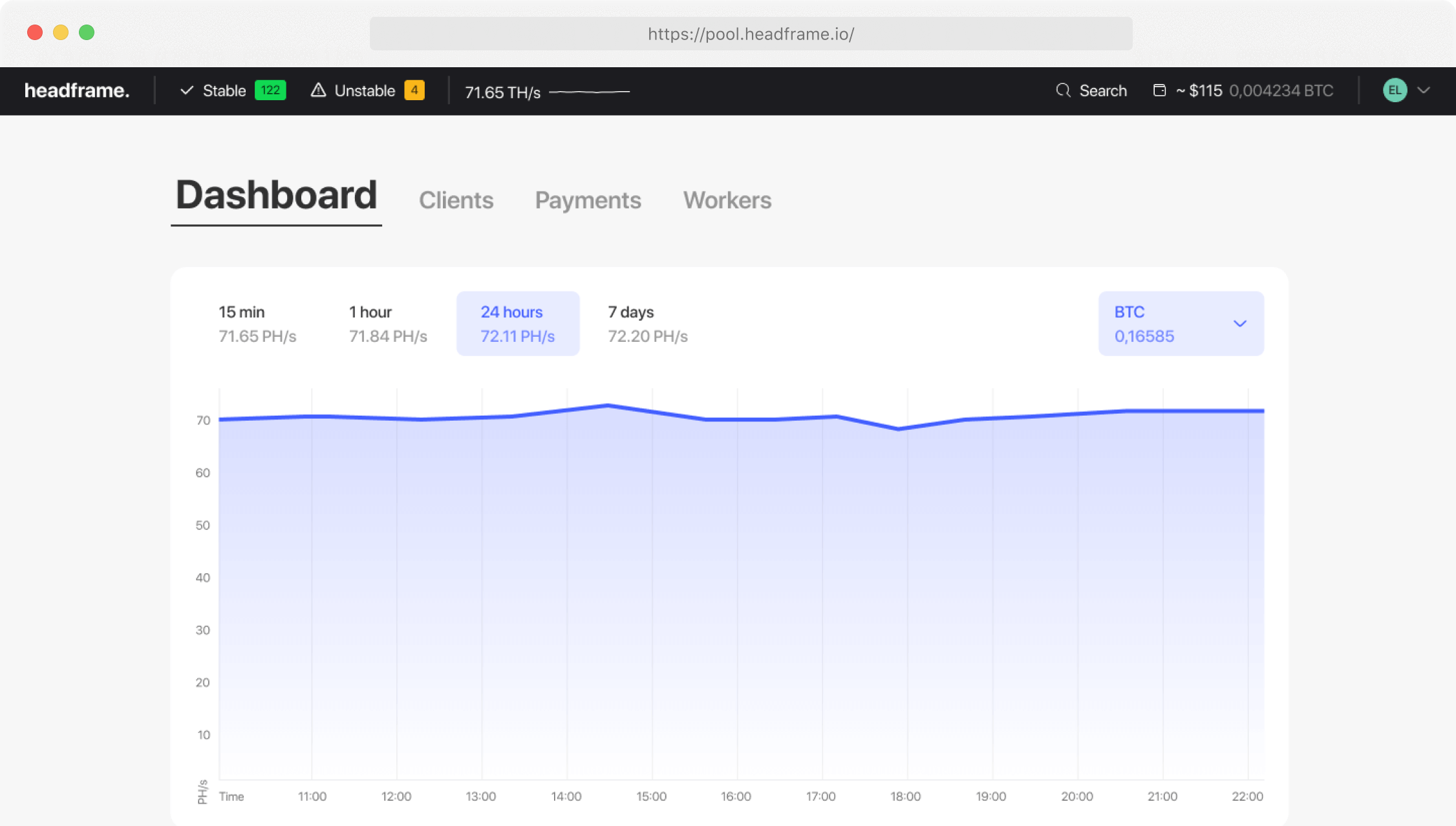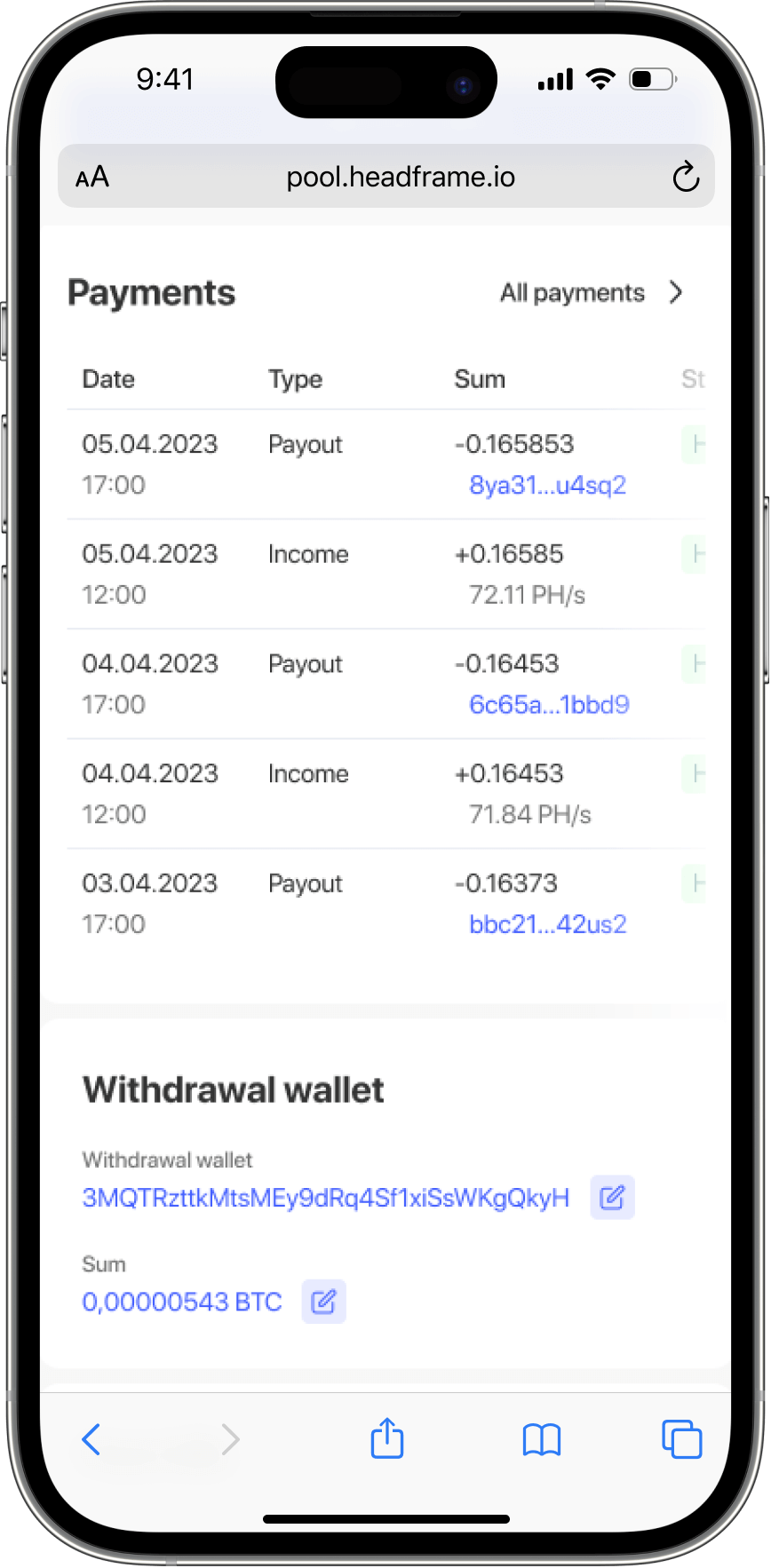
Mining in Paraguay
Paraguay, one of Latin America’s smallest countries, is fast becoming one of its largest bitcoin mining centers.
Earn more money with Headframe
Join a mining pool and get the best profitability in mining. Already more than 10,000 miners trust Headframe.
When China’s mining ban shifted the axis of the bitcoin mining industry from East to West, Latin America experienced a meteoric rise as a key mining center. As for Paraguay, the country’s abundance of cheap hydroelectricity has quickly made it a popular destination for miners.
The only thing that could hinder hashrate growth in this country is the electricity tariffs and the bureaucratic hurdles that the Paraguayan bureaucracy imposes on the industry.
We take an in-depth look at what makes Paraguay such an attractive center for bitcoin mining, as well as some of the regulatory requirements that could be a cause for concern for future hashrate growth in the country.
- Latin America is a growing center for bitcoin mining
- Itaipu dam provides an influx of renewable energy
- Negotiating electricity tariffs with ANDE
- Operating conditions for bitcoin mining in Paraguay
- Legal and regulatory framework for bitcoin mining in Paraguay
- Paraguay to become Latin America’s leading bitcoin mining center
Latin America is a growing center for bitcoin mining
The Cambridge Bitcoin Power Consumption Index estimates that Paraguay will host 0.15% of the bitcoin hashrate in December 2021. Not only is this figure outdated, but it is also based on a top-down approach that tracks the IP addresses of users of bitcoin mining pools. The use of VPNs, not to mention the fact that many miners host their machines in countries other than where they reside, reduces the accuracy of this data.
To supplement the Cambridge data, a bottom-up approach was used, all known bitcoin farms in Paraguay were selected.
It is estimated that between 100 and 125 MW of bitcoins are mined in Paraguay, representing 1.45% of the total network hashrate at the top end and 1.16% at the bottom end, according to the Hashrate Index of bitcoin mining energy consumption.
Itaipu Dam provides an influx of renewable energy
The biggest incentive for bitcoin miners to move to Paraguay is the 23,700-foot-high Itaipu Dam made of concrete and steel.
It is second only to China’s Three Gorges Dam, then (and now) the heart of China’s bitcoin mining industry, and is capable of generating 14 GW of electricity. In operation since May 5, 1984, the dam provides power to Paraguay, Brazil and Argentina, with Brazil and Paraguay co-owning the colossus.
Paraguay receives more than 99% of its electricity from this dam and its much smaller counterparts, the Yacireta and Acaray dams. However, Paraguay’s population of 6.7 million people is unable to consume all the power generated by the dams and is forced to export 90% of it to neighboring countries Brazil, Bolivia, and Argentina.
Negotiations on electricity tariffs with ANDE
Paraguay’s National Electricity Grid Company (ANDE) is a monopoly in electricity generation and distribution. The only exceptions to this monopoly are CLYFSA (Compañía de Luz y Fuerza, S.A.), a power company that can sell electricity in Villarrica, and Empresas Distribuidoras Mennonites del Chaco Central. CLYFSA’s tariffs can be as low as $1.6 per kWh, so contracts with this company are highly coveted. They are so popular that demand has pushed CLYFSA to the limit.
Because ANDE is the only entity allowed to use energy commercially in the country, most Paraguayan hosting contracts include profit sharing. ANDE’s monopoly does not allow hosting companies to make a spread on the electricity they sell to their mining customers; instead, they receive a share of the miner’s profits. A typical profit share in a country is 15-20% depending on the scale of the mining operation.
ANDE typically allocates capacity in tranches of 6 MW as part of land leases, and it is important to note that buyers of such PPAs typically must supply their own transformers. Buyers can enter into such Power Purchase Agreements (PPAs) within a few weeks, and the prices are very different from the PPAs offered by Clyfsa. A typical rate for a single 6MW unit of energy can be $4.6 per month, although we have become aware of a 100MW deal that offered $2.8 per month (with up to 10% downtime) OR $3.8 per month with no downtime.
Could not find a data point showing the average electricity price for industry in Paraguay.
Working conditions for bitcoin mining in Paraguay
One of the few arguments against Paraguay’s suitability for bitcoin mining is its climate.
During the summer in Paraguay (November through March), temperatures can reach 100 degrees Fahrenheit. In addition, Paraguay has a very humid climate with an average annual humidity of 70%.
Both heat and humidity are not good for bitcoin mining rigs (particularly air-cooled ones). Given that mining rigs operate at high temperatures, extreme heat requires extra care in cooling, and humidity can shorten the life of the rig by rusting important components.
However, with proper cooling and air circulation, heat and humidity shouldn’t pose much of a problem for miners. After all, Texas and Georgia are hot and terribly humid during the summer months, and these are the states where the bulk of the US hashrate is concentrated.
Legal framework for bitcoin mining in Paraguay
In order to import bitcoin mining equipment on a mass scale, miners need to set up an LLC, as well as obtain a permit to import cables and other electrical equipment necessary to ensure the operation of mining. The cost of importing mining equipment can be 17-20% of its market value (which is generally inexpensive when compared to the 50-80% tariffs that miners pay to import equipment to Brazil and Argentina). In addition, miners need a permit from the Department of Commerce to build a bitcoin farm, but this permit can be obtained in a matter of days. Finally, bitcoin miners must pay an environmental tax to avoid violating the law.
Late last year, Paraguay’s president vetoed a bill to regulate cryptocurrency and bitcoin mining. After the bill was returned from the president’s desk, parliament did not have a sufficient quorum to vote on it, so the vote has been postponed for another year.
If passed, the bill would increase the bureaucratic burden on Paraguayan bitcoin miners. It would require a new license to provide information about the IP addresses of individuals operating miners in Paraguay.
However, a positive aspect of the bill is that it will reduce the tariff that miners pay for access to electricity.
Paraguay will become the leading bitcoin mining center in Latin America
Paraguay has a lot to offer bitcoin miners. The Itaipu Dam and other dams provide the country with cheap electricity in abundance, and the regulatory environment is relatively friendly. We expect Paraguay to emerge as the main bitcoin mining center in Latin America in the near to medium term future.
Of course, like any other jurisdiction, Paraguay has its drawbacks. For example, reasonable and readily available funding will be a challenge for miners looking to hash in Paraguay. Large players (such as publicly traded companies like Bitfarms) can easily access fundraising and financing, but smaller operators may not have that luxury.
Currently, very few cryptocurrency lenders are considering lending to operators in Paraguay. The obstacle here is the uncertainty of the regulatory framework, not to mention the fact that many of these lenders already have large businesses in the US and Canada.
Finding the right incentive mechanisms to make these players feel comfortable and active in the region will be key to its future development. In addition, certainty over the cryptocurrency bill, which was delayed last year, could help boost the bitcoin mining industry in the county.
Source: https://hashrateindex.com/blog/bitcoin-mining-around-the-world-paraguay/


